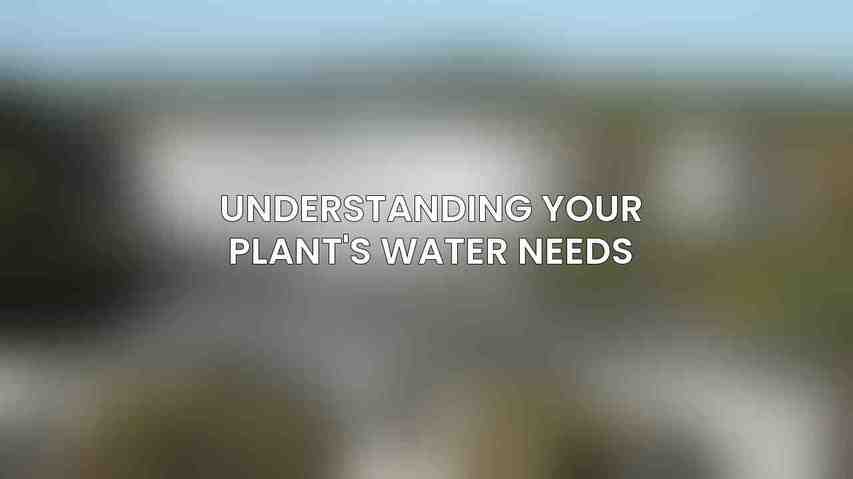Indoor plants not only add beauty to our living spaces but also contribute to cleaner air and a sense of well-being. Proper care, including watering, is essential to help indoor plants thrive. As noted by The Spruce, “Watering is the most important aspect of keeping your indoor plants alive.” This guide, presented by 1-800-FLORALS, will help you understand the significance of watering indoor plants and provide expert tips for optimal plant care.
Understanding Your Plant’s Water Needs

When it comes to watering indoor plants, understanding their specific water requirements is crucial for their health and longevity. Several factors influence how much and how often you should water your plants:
| Factors Affecting Water Requirements | |
|---|---|
| Plant Type | Different plants have varying water needs. Succulents require less water than tropical plants. |
| Pot Size and Material | The size of the pot and the material it’s made of affect how quickly soil dries out. |
| Environment | Factors such as temperature and humidity levels in your home impact how often plants need to be watered. |
Knowing the signs of overwatering and underwatering is essential for preventing damage to your plants:
| Signs of Overwatering vs. Underwatering | |
|---|---|
| Overwatering | Yellowing leaves, root rot, and stunted growth are common signs of overwatering. |
| Underwatering | Wilting leaves, dry soil, and brown edges on leaves indicate that plants need more water. |
Watering Frequency and Methods
Establishing a suitable watering schedule is key to maintaining healthy indoor plants. Here are some general guidelines to help you determine when and how to water your plants effectively:
- Water thoroughly when the soil feels dry to the touch, but avoid letting plants sit in water.
- Adjust your watering frequency based on the specific needs of each plant and environmental factors like temperature and humidity.
There are various watering techniques you can employ, including top watering (pouring water onto the soil surface), bottom watering (soaking the pot from below), and drip irrigation (providing a slow, steady flow of water).
Choosing the Right Water

The type of water you use can impact the health of your indoor plants. Consider the following options for watering your plants:
- Tap Water: Generally suitable for most plants, but allow it to sit for 24 hours to allow chlorine to dissipate.
- Rainwater: Chemical-free and ideal for plants, but you may need to supplement during dry periods.
- Distilled Water: Best for sensitive plants, although it can be more costly than other options.
Special Considerations

Different situations may require adjustments to your watering routine to ensure your plants remain healthy and vibrant:
- Watering Dormant Plants: Reduce watering frequency significantly for dormant plants to avoid waterlogging.
- Watering Plants in Self-Watering Pots: Follow the manufacturer’s instructions carefully to prevent overwatering or underwatering.
- Watering Plants with Ceramic Glazed Pots: These pots may require more frequent watering as the glaze can cause moisture to evaporate quickly.
Stay tuned for detailed information on watering indoor plants effectively with advice from 1-800-FLORALS in the next sections of this guide.
Frequently Asked Questions
How often should I water my indoor plants?
The frequency of watering indoor plants depends on the type of plant, its size, and the conditions in your home. Generally, aim to water when the top inch of soil feels dry.
How much water should I give to my indoor plants?
It’s important not to over-water indoor plants. Water thoroughly until it drains out of the bottom of the pot, but make sure not to let them sit in water as this can lead to root rot.
Should I use tap water or filtered water for watering indoor plants?
Using filtered or distilled water is best as tap water can contain minerals and chemicals that may harm your plants over time.
What is the best time of day to water indoor plants?
Watering in the morning is generally ideal as it allows the plant to absorb moisture during the day and reduces the risk of fungal diseases developing overnight.
How can I tell if my indoor plant is getting too much or too little water?
Signs of over-watering include yellowing leaves, drooping stems, and moldy soil. Under-watering can cause wilting, dry leaf edges, and soil that pulls away from the pot.

